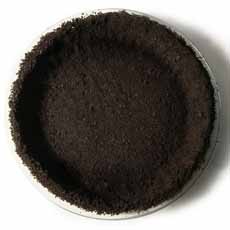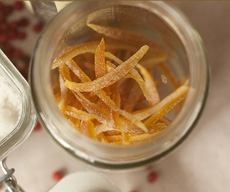Chocolate Pudding Pie Recipe (Or Use Your Favorite Flavor)
|
|
For National Chocolate Pudding Day, June 26th, how about a chocolate pudding pie?
It’s easy to purchase a chocolate cookie crust if you don’t want to crush chocolate wafer cookies. But do make the pudding from scratch. Here’s the chocolate pudding recipe we use. You can also make a chocolate tart, substituting the pie crust for a buttery shortbread crust. National Chocolate Pudding Day is June 26th, which is why we’re featuring this recipe today. But make the recipe anytime, and use it to substitute other flavors: butterscotch pudding, pistachio pudding, vanilla pudding, etc. Ingredients Numerous choices: 1. MAKE or buy the crust. 2. MAKE the pudding (recipe, or buy a box of mix). Pour into the pie crust and let set. Refrigerate until ready to serve. 3. ADD the rim when you’re ready to serve. Cookies, crumbs, etc. will lose their crispness in the fridge. |
|
|
COOKED PUDDING HISTORY First, what is pudding? It depends on where you are located. American pudding is a creamy, sweetened milk mixture thickened with cornstarch, then cooked. It has no eggs. When a recipe is exceptionally smooth and light, it is often called silk pudding for its silky texture. In the U.K. and Europe, this type of pudding is known as blancmange (blah-MOHNJ). The original creamy pudding, blancmange (from blanc-manger, white dish), was vanilla, not chocolate. The latter had yet to come to Europe from the New World. In the U.K., “pudding” refers to any dessert, and also, specifically, to sweet, cake-like baked, steamed and boiled puddings, usually made in a mold. Bread pudding, stale bread baked in a custard sauce, is another well-known “pudding.” There are also savory puddings and other foods that are called pudding: black pudding or blood pudding (sausage), Yorkshire pudding* (baked batter, served as a side). Culinary historians believe that the precursor of vanilla pudding originated in earl early medieval Europe, an evolution of an Arab pudding-like dish of rice and almonds. The oldest recipe known dates back to the early 13th century, a translation that is believed to have been based on a manuscript from the 12th century or earlier. Over the centuries, the recipe turned into blancmange (pronounced blah-MOHNJ), meaning “white dish,” from the Old French blanc mangier. This dish was enjoyed by Europe’s wealthy during the Middle Ages. It appears frequently in recipe collections of the time from all over the Continent, and is called one of “the few truly international dishes of medieval and early modern Europe.” [Source] The dish is referred to in the prologue to Geoffrey Chaucer’s Canterbury Tales and in an early 15th-century cookbook written by the chefs of Richard II. We first came across the reference as a child, in the book, Little Women. Originally a white stew, the key ingredients of the original blancmange were milk or almond milk, sugar and shredded capon or fish. In the 17th century, the meat was dropped and the dish evolved into a dessert pudding made with cream and eggs (and, later, gelatin†). In the 19th century, arrowroot and cornstarch were added and the dish evolved into the final, modern blancmange, known in the U.S. as vanilla pudding (and originally known as cornstarch pudding). Chocolate pudding, by the way, was developed from the cacao beans brought to Europe from Mesoamerica in the 16th century. The Aztecs and Mayas ground the beans and made a drink from them. European chefs made hot beverages (early versions of hot chocolate) and puddings! *Yorkshire pudding and popovers use the same batter, but popovers are baked in individual cups or molds, like muffins. Yorkshire pudding, served as a side with roast beef, uses the same batter, but is traditionally baked in the pan drippings in which the beef was roasted. In lieu of pan drippings, popovers can be brushed with melted butter. †Gelatin was made in ancient times by boiling the bones; powdered gelatin was invented in France in 1682 by Denis Papin. The concept of cooking it with sugar to make dessert dates to 1845 and an inventor named Peter Cooper—the same person who established Cooper Union, an institute of higher education in New York City.
|
||





